Chester-le-Street Cricket Club is situated behind the shops facing the Chicago Rock Café site and has played here since 1866. Also nearby is the new Riverside ground, home to Durham County Cricket Club. The first first-class match was held at ‘The Riverside’ in May 1995. The ground hosted its first Test Match (between England and Zimbabwe) in 2003 – all a far cry from the early days of cricket, when the target was usually the wicket-gate of the sheep pasture which was defended with a bat in the form of a shepherd’s crooked staff.
Photographs and text about The Wicket Gate.
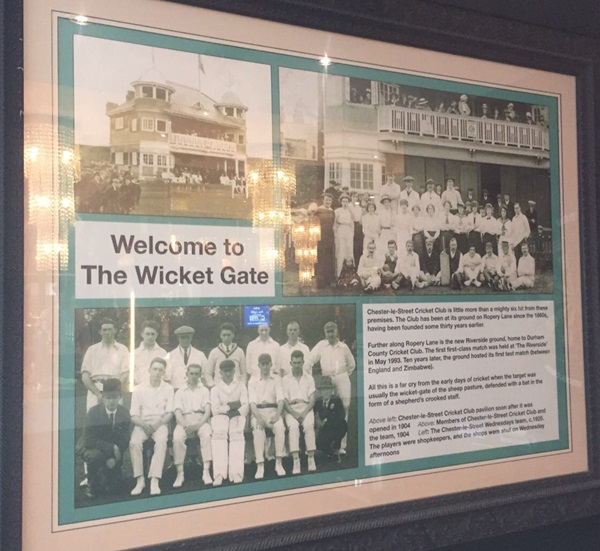
The text reads: Chester-le-Street Club is little more than a mighty six hit from these premises. The Club has been at its ground on Ropery Lane since the 1860s, having been founded some thirty years earlier.
Further along Ropery Lane is the new Riverside ground, home to Durham County Cricket Club. The first first-class match was held at The Riverside in May 1993. Ten years later, the ground hosted its first test match (between England and Zimbabwe).
All this is a far cry from the early days of cricket when the target was usually the wicket-gate of the sheep pasture, defended with a bat in the form of a shepherd’s crooked staff.
Above left: Chester-le-Street Cricket Club pavilion soon after it was opened in 1904
Above: Members of Chester-le-Street Wednesdays team, c1925.
The players were shopkeepers, and the shops were shut on Wednesday afternoons.
A photograph of Chester-le-Street cricketers in the late 19th century.
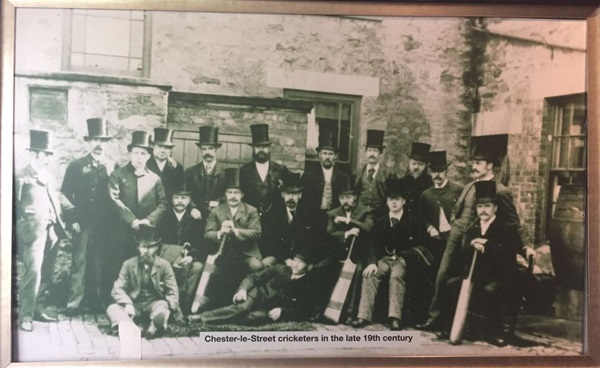
Prints and text about the Lumley family.

The text reads: Along the north wall of Chester-le-Street Parish Church are the fourteen Lumley Warriors, placed there by Lord Lumley, in 1594. Two of the Warriors were brought here from the graveyard of Durham Cathedral. The first of the effigies is Liulf of Great Lumley, an Anglo-Saxon noble, from whom the Lumley family claim descent.
The Lumley family connection with Chester-le-Street dates back to the late 14th century, when Sir Ralph Lumley built Lumley Castle. Not long after, Sir Ralph was executed for his part in the failed attempted to overthrow King Henry IV.
The castle later fell into disrepair and was rebuilt by the renowned architect Sir John Vanburgh. In the 1940s it was taken over by Durham University and used as a hall of residence. Since the 1960s the former castle has been a hotel.
Top: Lumley Castle from Ropery Lane, c1890
Above: John, first Baron Lumley, scholar and book-collector, who greatly enhanced Lumley Castle. His library was later incorporated into the royal library and eventually into the British Museum.
Photographs and text about football in Chester-le-Street.
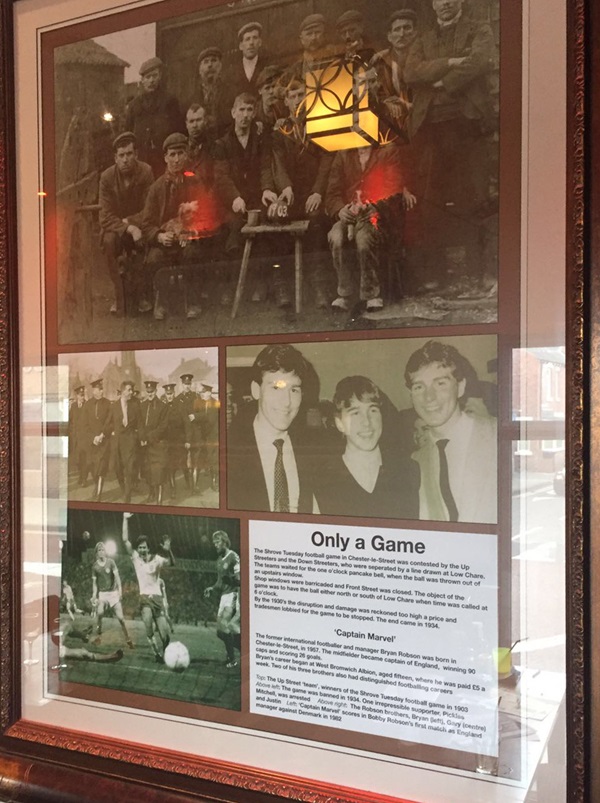
The text reads: The Shrove Tuesday football game in Chester-le-Street was contested by the Up Streeters and the Down Streeters, who were separated by a line drawn at Low Chare. The teams waited for the one o’clock pancake bell, when the ball was thrown out of an upstairs window.
Shop windows were barricaded and Front Street was closed. The object of the game was to have the ball either north or south of Low Chare when time was called at 6 o’clock.
By the 1930s the disruption and damage was reckoned too high a price and tradesmen lobbied for the game to be stopped. The end came in 1934.
The former international football and manager Bryan Robson was born in Chester-le-Street, in 1957. The midfielder became captain of England, winning 90 caps and scoring 26 goals. Bryan’s career began at West Bromwich Albion, aged fifteen, where he was paid £5 a week. Two of his three brothers also had distinguished footballing careers.
Top: The Up Street team, winners of the Shrove Tuesday football game in 1903
Above left: The game was banned in 1934. One irrepressible supporter, Pickles Mitchell, was arrested
Above right: The Robson brothers, Bryan (left), Gary (centre) and Justin.
Left: Captain Marvel scores in Bobby Robson’s first match as England manager against Denmark in 1982.
Prints and text about Saint Cuthbert.
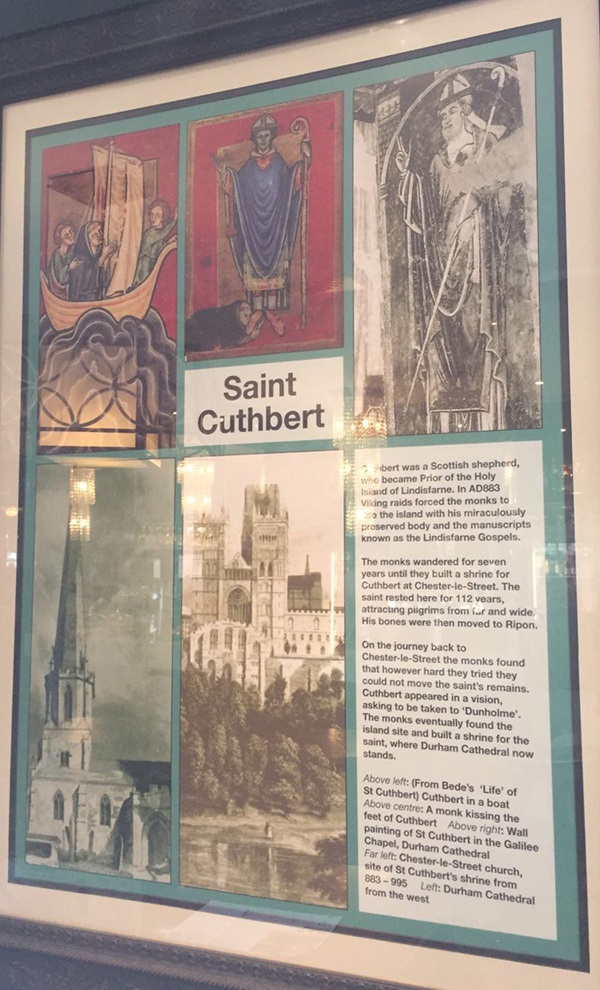
The text reads: Cuthbert was a Scottish shepherd, who became Prior of the Holy Island of Lindisfarne. In AD883 Viking raids forced the monks to flee the island with his miraculously preserved body and the manuscripts known as the Lindisfarne Gospels.
The monks wandered for seven years until they built a shrine for Cuthbert at Chester-le-Street. The saint rested here for 112 years, attracting pilgrims from far and wide. His bones were then moved to Ripon.
On the journey back to Chester-le-Street the monks found that however hard they tried they could not move the saint’s remains. Cuthbert appeared in a vision asking to be taken to Bunholme. The monks eventually found the island site and built a shrine for the saint, where Durham Cathedral now stands.
Above left: (From Bede’s Life of St Cuthbert) Cuthbert in a boat
Above centre: A monk kissing the feet of Cuthbert
Above right: Wall painting of St Cuthbert
Above right: Wall painting of St Cuthbert in the Galilee Chapel, Durham Cathedral
Far Left: Chester-le-Street Church, site of St Cuthbert’s shrine from 883-995
Left: Durham Cathedral from the west.
A photograph of Lumley Castle, c1900 and a print of Richard, Viscount Lumley, first Earl of Scarborough.
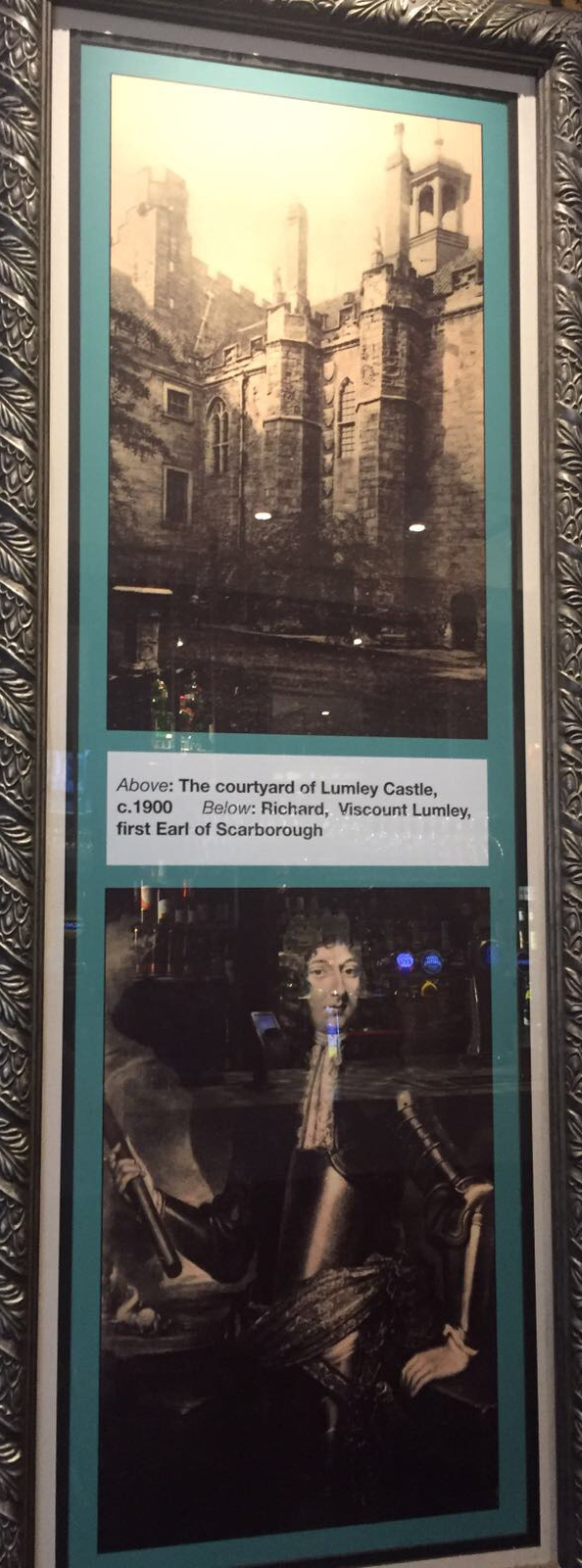
Photographs of Chester-le-Street.

Top: A view of Ropery Lane, c1910. Where the ladies are walking is now the approach to the new County Ground from the roundabout
Above: The rope works, from which Ropery Lane got its name
Below: Looking up Front Street with this site on the right beside the horse and cart.
A photograph, prints and text about the Lambton family.
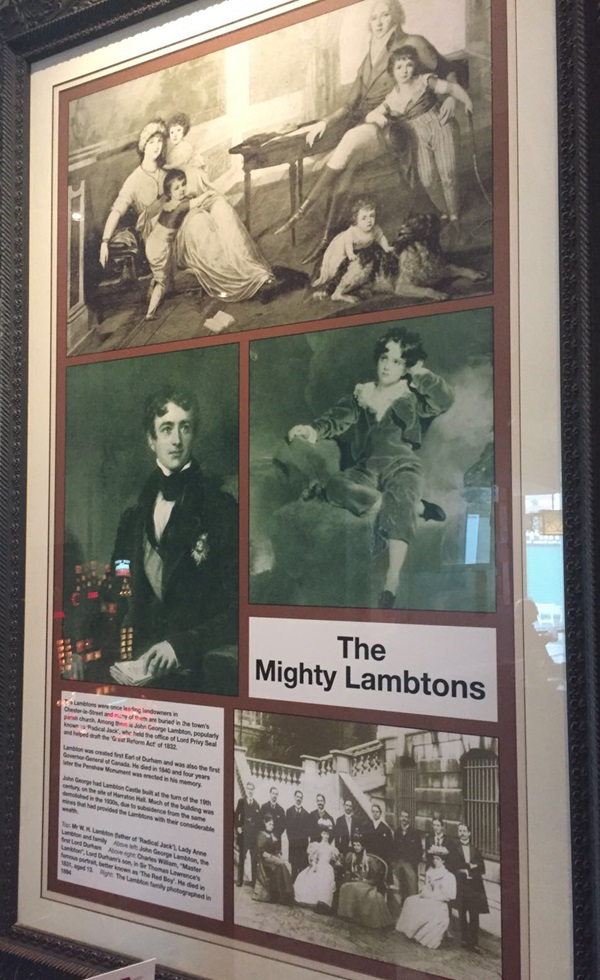
The text reads: The Lambtons were once leading landowners in Chester-le-Street and many of them are buried in the town’s parish church. Among them is John George Lambton, popularly known as Radical Jack, who held the office of Lord Privy Seal and helped draft the Great Reform Act of 1632.
Lambton was created first Earl of Durham and was also the first Governor-General of Canada. He died in 1840 and four years later the Penshaw Monument was erected in his memory.
John George had Lambton Castle built at the turn of the 19th century, on the site of Harraton Hall. Much of the building was demolished in the 1930s, due to subsidence from the same mines that had provided the Lambtons with their considerable wealth.
Top: Mr WH Lambton (father of Radical Jack), Lady Anne Lambton and family
Above left: John George Lambton, the first Lord Durham
Above right: Charles William, Master Lambton, Lord Durham’s son, in Sir Thomas Lawrence’s famous portrait, better known as The Red Boy. He died in 1831, aged 13.
Right: The Lambton family photographed in 1894.
External photograph of the building – main entrance.
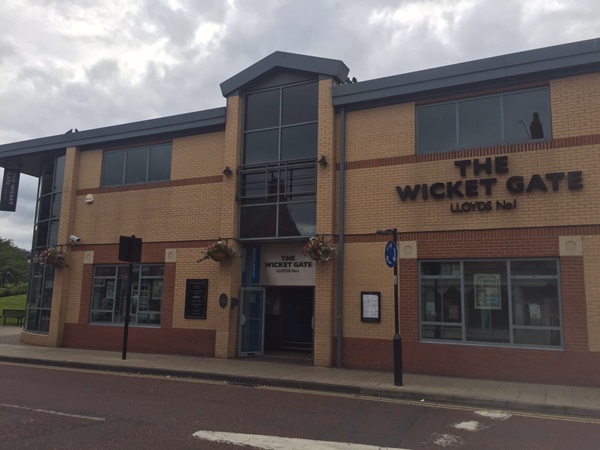
If you have information on the history of this pub, then we’d like you to share it with us. Please e-mail all information to: pubhistories@jdwetherspoon.co.uk